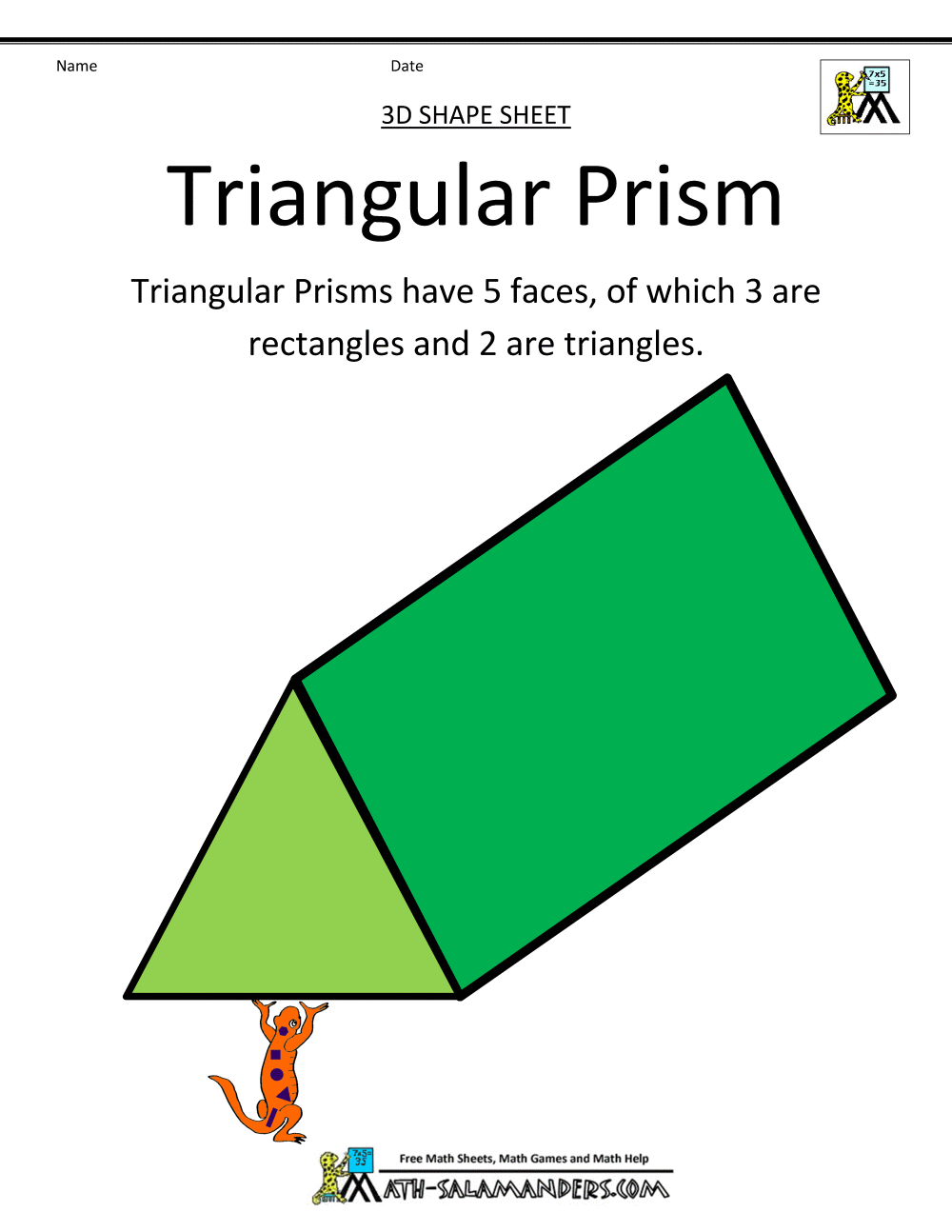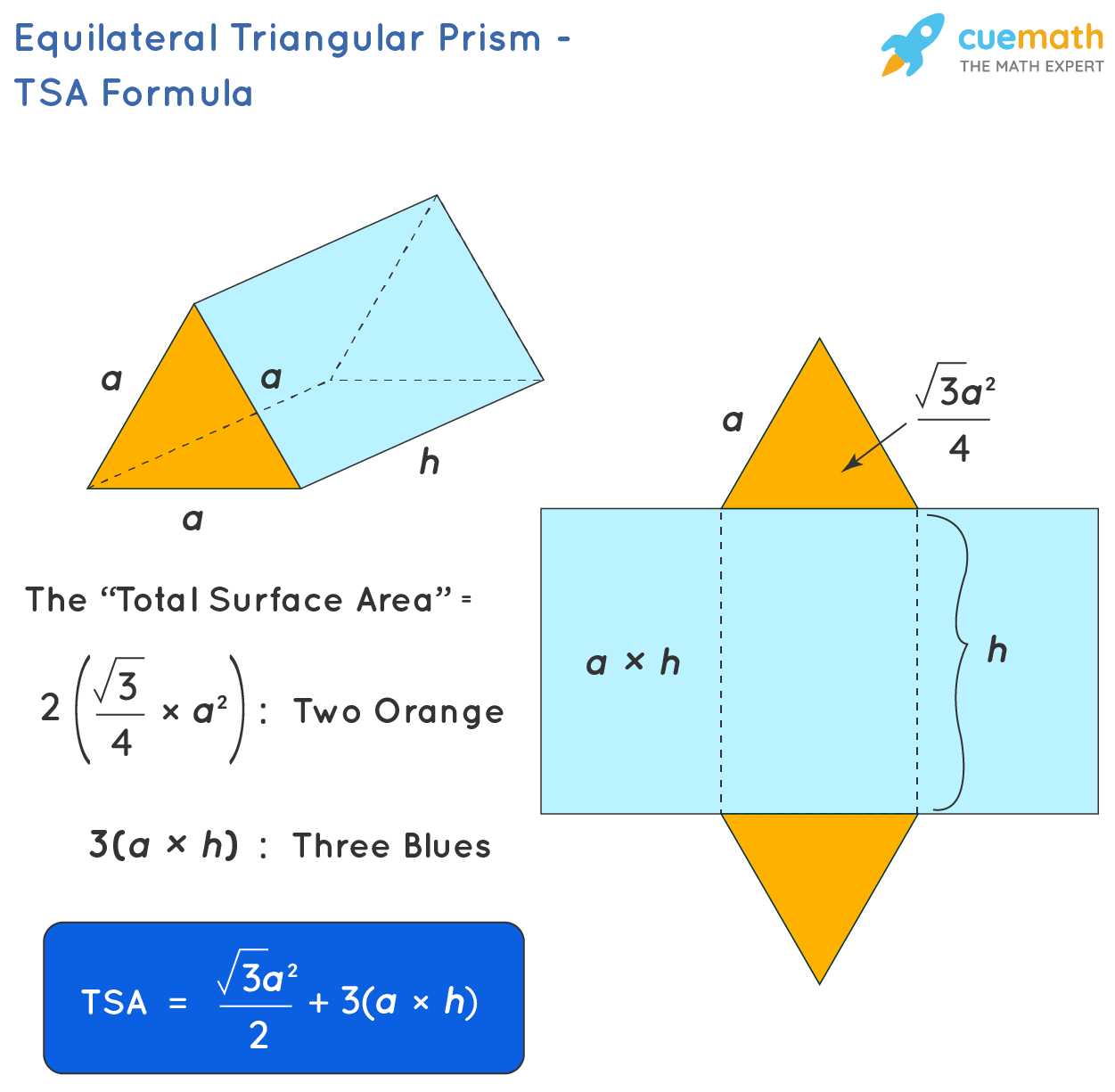

The sides of the lateral faces are also called lateral edges. If the bases are horizontal, they are sometimes called the top and the bottom (faces). This is the surface area of all sides of the prism that are not the base. The formula is, where equals the surface area of the prism, equals the lateral area of the prism, and equals the area of one base. The rectangular faces are said to be lateral, while the triangular faces are bases. Set up the formula for finding the surface area of a prism. If the triangular faces are equilateral, the prism is regular, in which case the rectangular faces are congruent. (If the lateral faces are not perpendicular to the bases, that is a plain triangular prism.) This is a polyhedron with 6 vertices, 9 edges, and 5 faces. See for more information.A right triangular prism is a prism with two parallel and congruent triangular faces and three rectangular faces perpendicular to the triangular ones. He is interested in using interactive models (physical and digital) to illustrate concepts in calculus and geometry for learners. Therefore, the polyhedron depicted here has the fewest possible non-flat vertices.Ībout the artist: Stepan Paul is a Teaching Assistant Professor North Carolina State University. No polyhedron may have two or fewer non-flat vertices since the angle defect of each vertex is less than 360 degrees. The edges and vertices of the bases are joined with each other via three rectangular sides. What is the surface area of the square pyramid 64 m2 96 m2 192 m2 256 m2, Rahul is wrapping a gift that has the dimensions shown. The surface area of the prism is m2., Each of the triangular faces has an area of 32 m2. The area of one of the triangular faces is m2. The other six vertices are folded from paper, showing that they must be flat. Triangular Prism is a pentahedron and has nine distinct nets. The area of one of the rectangular side faces is m2. This can be written as: a h (where, a side of. In other words, the volume of a square prism is its base area multiplied by its height. As we know a cylinder has 2 faces, 0 vertices and 0 edges. What is the surface area of the prism First, substitute the given values into the formula. The length of each side is 10 feet and the width of each side is 6 feet. A triangular prism has a triangular end with a base of 8 feet and a height of 6 feet.

2) Find the number of faces, edges and vertices in the figure given below: (Image will be Uploaded Soon) Solution) The figure given above is a cylinder. The answer is the surface area of the above triangular prism is 156 square inches. As we can see from the figure, a square pyramid has 5 faces, 5 vertices and 8 edges. The volume of a prism is its cross-sectional area multiplied by its length. Solution) The figure given above is a square pyramid. all but one shown in the Polyplane exhibit), the sum of the angle defects of its vertices will be 720 degrees.ĭepicted here is a polyhedron with only three non-flat vertices–the three points of the star. surface area of a square prism (2 × Base Area) + Lateral Surface Area.

Prisms Triangular Prism 343-344 Four-sided Prism. Only a flat vertex can be folded from paper without cutting, gluing, or overlapping.Ī theorem of Descartes says that for any genus-zero polyhedron (e.g. FOLDING PARALLELOPIPEDS AND SQUARE PRISMS, can be easily made by drawing and cutting out large figures. A vertex is called “flat” if it has angle defect zero. For example, each vertex of a cube has angle defect 90 degrees, since the three right angles meeting at any vertex add to 270 degrees and 360 – 270 = 90. The “angle defect” of a vertex of a polyhedron is 360 degrees minus the sum of the angles of the faces meeting at that vertex. A Triangular Prism is a polyhedron, (three-dimensional shape) made up of two triangular bases and three rectangular sides.


 0 kommentar(er)
0 kommentar(er)
